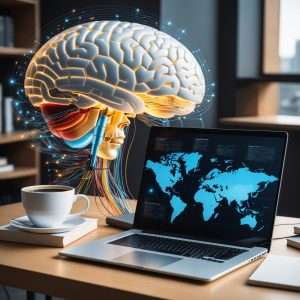Zombie Bunny is Reader-supported and may earn an affiliate commission through links on our site.

AI Takes Over: How Machines are Outsmarting Humans
Explore the possibilities, challenges, and implications of AI as it reshapes fields like healthcare, finance, education, and transportation.
Discover the transformative power and potential of artificial intelligence (AI) as it revolutionizes various sectors, from healthcare and finance to education and transportation. This blog post dives deep into the fascinating journey of AI, its exponential growth, and how it’s reshaping the world. However, the rise of AI isn’t without its challenges. Uncover the ethical and moral dilemmas, job displacement fears, and the potential misuse of AI. Learn about the complex architecture of AI, the role of programming and infrastructure, and the future implications of AI in our personal lives and on a global scale. Dive into the opportunities and threats AI presents, and how we can prepare for an AI-driven future.
Introduction: The Rise of AI

© Copyright , ZombieBunny.Org
Understanding AI and its evolution
Artificial Intelligence (AI) has come a long way from its conceptual stage, rapidly evolving into a powerful tool that holds the potential to revolutionize our world. The journey of AI began in the mid-20th century with the dream of creating machines capable of performing tasks that would normally require human intelligence. This included problem-solving, learning, planning, and understanding complex concepts. The initial goal was to create general AI systems that could outperform humans at most economically valuable work, a dream that is still being pursued.
However, the evolution of AI took a significant turn with the emergence of machine learning, a subset of AI. Machine learning provided machines with the ability to learn from data, improve from experience, and make predictions or decisions without being explicitly programmed. This leap opened up an array of possibilities and applications for AI, propelling it into various sectors such as healthcare, finance, transportation, and more. Today, we stand at the brink of another major breakthrough with the advent of Deep Learning, a further subset of machine learning, that mimics the workings of the human brain in processing data for decision making. As we delve deeper into the realm of AI, the future promises fascinating advancements, propelling us towards a world where machines might outsmart humans.
The exponential growth and applications of AI
The acceleration of AI’s growth in recent years is nothing short of remarkable. Its exponential growth is largely attributed to the advancements in computational power and the availability of massive amounts of data, which serve as the fuel for AI systems. AI’s ability to process and analyze large volumes of data with speed and accuracy has led to its rapid adoption across various sectors, and is subsequently driving its exponential growth.
The applications of AI are vast and varied. In healthcare, AI is being used to predict diseases, personalize treatments, and even perform surgeries. In finance, AI algorithms are used for risk assessment, fraud detection, and investment strategies. In transportation, AI is powering autonomous vehicles and optimizing logistic networks. In education, AI is personalizing learning experiences and providing virtual tutoring. Even in our homes, AI is present in the form of smart devices and virtual assistants, making our lives more convenient.
Beyond these applications, AI is being leveraged to tackle some of the world’s most pressing problems. It’s being used to predict natural disasters, combat climate change, and even explore the outer space. As we continue to innovate and improve AI technologies, the scope of its applications will only expand, promising a future where AI’s impact will be all-pervasive. The exponential growth and applications of AI underscore its potential to outsmart human intelligence, heralding a new era where machines take the lead.
The impact and potential threats of AI
Artificial Intelligence is transforming the world as we know it. Its impact is felt across various sectors, from healthcare and education to finance and transportation. AI is enhancing efficiency, improving accuracy, and enabling personalized experiences, thereby redefining our everyday lives. It is also contributing to solving complex global problems, such as climate change and disease outbreaks, by providing predictive insights and innovative solutions.
However, the rise of AI is not without its potential threats and challenges. As machines become more intelligent and autonomous, there is a growing concern about job displacement due to automation. AI systems are increasingly taking over tasks traditionally performed by humans, raising fears about widespread unemployment. Another significant threat is the potential misuse of AI. In the wrong hands, AI can be used for nefarious purposes, such as cyberattacks, deepfakes, and surveillance, posing serious security and privacy risks.
AI’s ability to make decisions also brings up ethical and moral dilemmas. As AI systems are trained on data, they can inherit and amplify existing biases in the data, leading to unfair outcomes. Furthermore, the lack of transparency in how AI makes decisions, often referred to as the “black box” problem, poses challenges in accountability and trust.
As we continue to embrace AI, it is crucial to proactively address these potential threats. This includes developing regulations, ensuring transparency, fostering AI literacy, and promoting ethical AI practices. While AI holds great promise, navigating its impact and potential threats is key to harnessing its benefits while mitigating its risks.
Section 2: The Anatomy of AI

© Copyright , ZombieBunny.Org
Understanding AI architecture and algorithms
The architecture of Artificial Intelligence is a complex structure that involves several layers and components working in harmony to enable intelligent machine behavior. At the core of AI lies the algorithms and models that drive its intelligence. Understanding these foundational elements is key to comprehending how machines are being trained to outsmart human intelligence.
AI algorithms serve as the brain of the system, dictating how it learns and makes decisions. These algorithms can broadly be categorized into two types: symbolic based and statistical based. Symbolic based algorithms, such as decision trees and rule-based systems, use explicit symbols to represent knowledge. On the other hand, statistical based algorithms, like machine learning models, find patterns in data and learn from them.
Machine learning, a subset of AI, has been a game-changer in the AI landscape. It involves algorithms that allow systems to learn from data, improve with experience, and make predictions or decisions. These algorithms can further be classified into supervised learning, unsupervised learning, and reinforcement learning, each with its unique learning approach.
Deep learning, a further subset of machine learning, takes these algorithms a step further. It uses artificial neural networks, inspired by the human brain, to process data and extract patterns for decision making. These networks consist of interconnected layers of nodes or “neurons”, each contributing to the system’s ability to make complex decisions.
The architecture and algorithms of AI form the backbone of the system, enabling it to learn, adapt, and evolve, thereby pushing the boundaries of what machines can achieve.
Exploring different AI models and systems
Artificial Intelligence (AI) encompasses a wide array of models and systems, each with its unique capabilities and applications. These models can range from simple rule-based systems to complex neural networks, serving diverse purposes across different domains.
Rule-based systems, one of the earliest forms of AI, operate based on predefined rules. These systems are straightforward and interpretable but lack the flexibility to handle complex tasks or adapt to new situations. On the other hand, machine learning models learn from data and improve over time. They can handle more complex tasks and adapt to new data but can sometimes be hard to interpret.
Among machine learning models, decision tree models are popular for their interpretability. They make decisions based on a series of questions, each splitting the data into smaller groups. Another widely used model is the support vector machine, which finds the best boundary that separates different classes in the data.
Deep learning models, a further subset of machine learning, are the most complex and powerful. These models, especially convolutional neural networks (CNNs) and recurrent neural networks (RNNs), have been transformative in fields like image recognition and natural language processing. CNNs are designed to process grid-like data, such as images, while RNNs are ideal for sequential data, like text or time series.
Exploring these AI models and systems gives us a glimpse into the diverse and powerful capabilities of AI, highlighting its potential to outperform human intelligence in various domains.
The role of programming and infrastructure in AI
The development and execution of Artificial Intelligence (AI) systems largely depend on two key elements: programming and infrastructure. Both play a pivotal role in the operational efficiency and effectiveness of AI systems, shaping their ability to outsmart human intelligence.
Programming in AI refers to the process of coding algorithms and models that drive the system’s intelligence. Various programming languages, such as Python, R, and Java, are used to develop AI systems. Python, in particular, has gained popularity in the AI community due to its simplicity and the availability of numerous AI and machine learning libraries, like TensorFlow and PyTorch. These libraries provide pre-written code for various AI tasks, simplifying the development process.
The infrastructure for AI, on the other hand, refers to the hardware and software components that support the functioning of AI systems. This includes data storage and processing units, networking capabilities, and cloud platforms. The growth of AI has led to a surge in the demand for high-performance computing infrastructure capable of handling large volumes of data and complex computations.
Cloud platforms, such as Google Cloud, Amazon Web Services, and Microsoft Azure, have emerged as popular choices for AI infrastructure. They offer scalable, flexible, and cost-effective solutions for storing data, training models, and deploying AI applications.
The role of programming and infrastructure in AI is integral to its functionality and performance. As we continue to advance in AI, the evolution of programming techniques and infrastructure will play a crucial role in shaping the future of AI.
Section 3: AI vs Human Intelligence
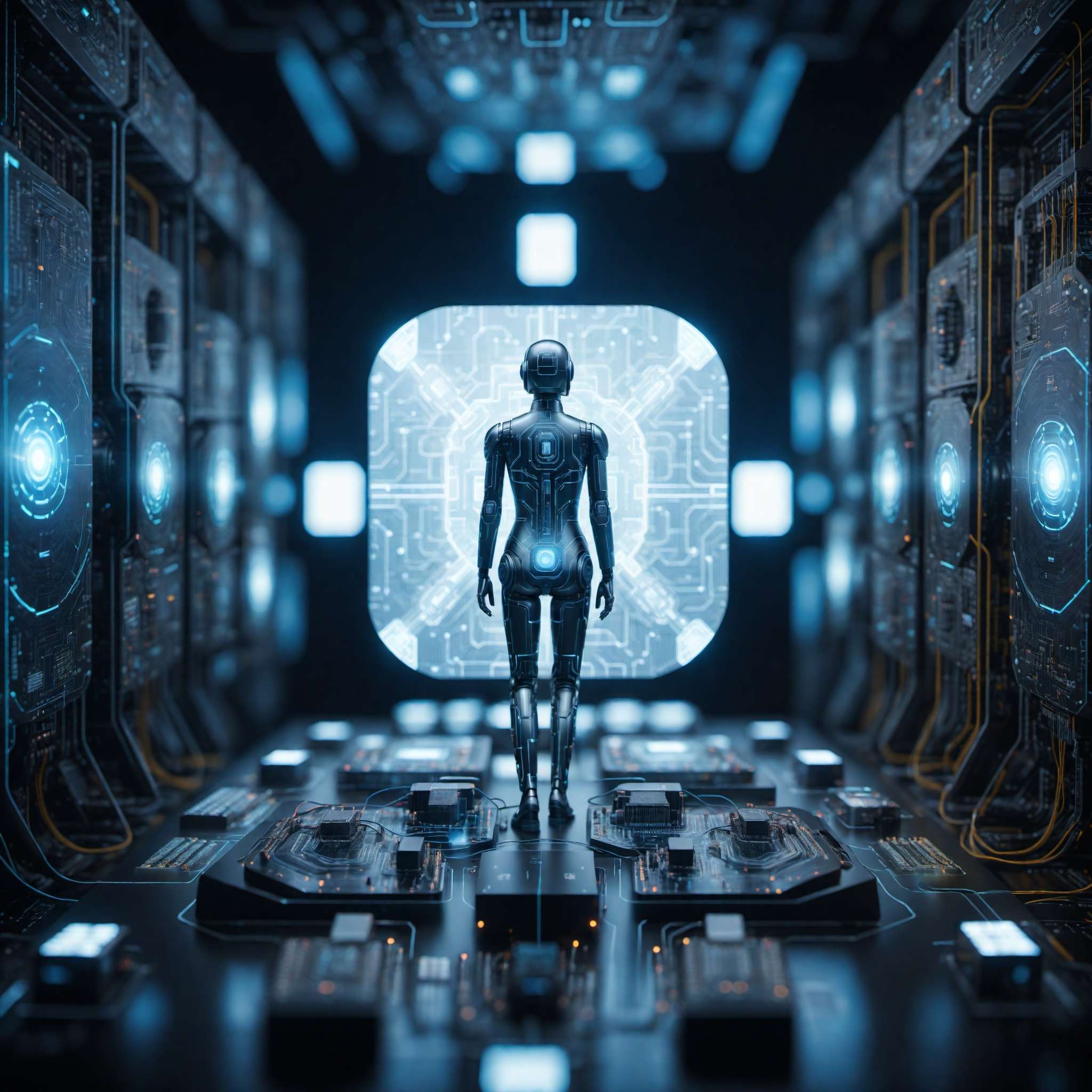
© Copyright , ZombieBunny.Org
Analyzing AI’s capabilities and limitations
Artificial Intelligence (AI) has made significant strides in recent years, demonstrating capabilities that often surpass human performance. However, it’s essential to understand that AI also has its limitations, and distinguishing between the two is critical to accurately assess its potential to outsmart humans.
AI systems excel in tasks that involve processing large volumes of data, identifying patterns, and making predictions. These tasks, which would take humans considerable time and effort, can be performed by AI rapidly and accurately. AI’s ability to learn from data and improve over time enables it to automate complex tasks, enhance decision-making, and provide personalized experiences.
Despite these impressive capabilities, AI has its limitations. One key limitation is that AI lacks the ability to understand context like humans do. While AI can analyze data and make decisions based on patterns, it doesn’t understand the meaning or significance behind the data. This lack of understanding can lead to errors, especially when dealing with nuanced and context-dependent tasks.
Another limitation is that AI systems are only as good as the data they are trained on. If the training data is biased or incomplete, the AI system can produce biased or inaccurate results. Furthermore, AI systems lack creativity and emotional intelligence, skills that are uniquely human.
Analyzing AI’s capabilities and limitations helps us understand its potential and challenges in outsmarting human intelligence. As we continue to advance AI, the goal is to leverage its capabilities and mitigate its limitations to create AI systems that can work effectively alongside humans.
Comparing AI performance with human skills
As we delve into the era of Artificial Intelligence (AI), a comparison between AI performance and human skills becomes increasingly relevant. While AI has shown incredible prowess in various domains, it’s crucial to analyze how it stacks up against human skills.
In tasks involving data processing, pattern recognition, and prediction, AI often outperforms humans. AI’s ability to handle vast amounts of data and execute complex computations at high speed gives it an edge over humans in these areas. For instance, in medical diagnostics, AI algorithms can analyze thousands of medical images and detect abnormalities with remarkable accuracy, often surpassing human doctors.
However, when it comes to skills such as creativity, emotional intelligence, and contextual understanding, humans still have the upper hand. AI lacks the ability to understand and respond to emotions, a skill that’s integral to human interactions. Similarly, AI struggles with tasks requiring creative thinking and innovation, areas where humans excel.
Moreover, AI systems operate based on predefined algorithms and learn from data they are trained on. They lack the human ability to think out of the box, make decisions in ambiguous situations, and adapt quickly to entirely new scenarios without prior training.
While AI has made tremendous strides and can outperform humans in specific tasks, it still falls short in replicating the full range of human skills. The goal, therefore, should not be about AI replacing humans but rather about AI and humans complementing each other’s strengths.
Opportunities arising from AI and human intelligence collaboration
The fusion of Artificial Intelligence (AI) and human intelligence holds immense potential, opening up a plethora of opportunities across various sectors. The collaboration between AI and human intelligence is not about competition but rather about capitalizing on each other’s strengths to achieve greater outcomes.
AI systems can handle data-intensive tasks, provide insights, and automate routine tasks, thereby freeing up humans to focus on higher-level tasks requiring creativity, critical thinking, and emotional intelligence. This symbiotic relationship can lead to increased productivity, enhanced decision-making, and improved efficiency.
In healthcare, for instance, AI can analyze medical images and flag potential issues, while doctors leverage their medical expertise and emotional intelligence to make informed decisions and interact with patients. Similarly, in customer service, AI chatbots can handle routine queries, while humans step in to handle complex issues requiring empathy and negotiation skills.
Moreover, the combination of AI and human intelligence can facilitate personalized experiences. AI can analyze user data to understand preferences and behaviors, while humans can use these insights to deliver personalized services or products, enhancing customer satisfaction.
Furthermore, the collaboration between AI and human intelligence can drive innovation. AI can provide new insights and ideas by analyzing data patterns, while humans can use their creativity and contextual understanding to turn these ideas into innovative solutions.
The opportunities arising from AI and human intelligence collaboration underscore the potential of a future where AI and humans coexist and cooperate, rather than compete. This collaboration holds the key to unlocking the full potential of AI while maintaining the unique strengths of human intelligence.
Section 4: The AI Revolution in Industries
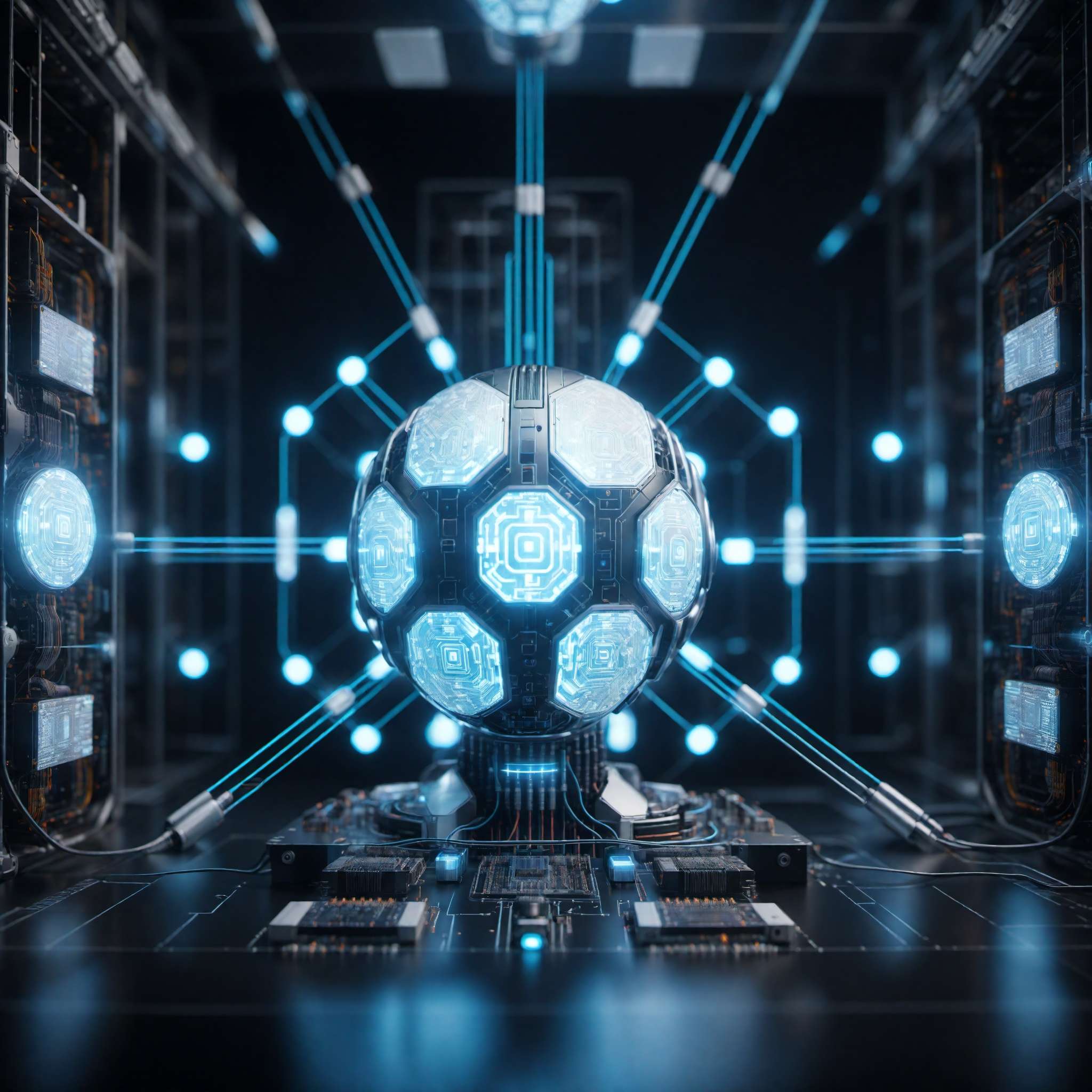
© Copyright , ZombieBunny.Org
How AI is revolutionizing industries
The advent of Artificial Intelligence (AI) has sparked a revolution across various industries, reshaping business models, operations, and customer experiences. By automating tasks, providing valuable insights, and enabling personalized experiences, AI is transforming industries and setting new standards of efficiency and productivity.
In the healthcare sector, AI is playing a crucial role in disease diagnosis, drug discovery, patient care, and personalized treatment. AI algorithms can analyze medical images and patient data to detect diseases early, predict health risks, and recommend personalized treatment plans, enhancing patient outcomes.
The finance industry is leveraging AI for risk assessment, fraud detection, portfolio management, and personalized customer services. AI chatbots and virtual assistants are providing 24/7 customer support, while AI algorithms are aiding in making investment decisions and detecting fraudulent transactions.
In the retail industry, AI is personalizing the shopping experience by analyzing customer data to understand their preferences and recommending products accordingly. In logistics and supply chain, AI is optimizing routes, predicting demand, and enhancing inventory management.
The manufacturing sector is using AI to improve production processes, enhance quality control, and predict maintenance needs. In the education sector, AI is personalizing learning experiences, providing virtual tutoring, and automating administrative tasks.
Across these industries and more, AI is not just a tool but a game-changer, driving innovation, competitiveness, and growth. As AI continues to evolve, its impact on industries is set to grow, creating a future where machines could potentially outsmart human performance in various tasks.
Real-world examples of AI implementation
Artificial Intelligence (AI) is no longer a distant concept but a reality, with numerous real-world examples of AI implementation across various sectors. These implementations demonstrate AI’s potential to enhance operations, decision-making, and customer experiences.
Healthcare provides a perfect example of AI implementation. Google’s DeepMind developed an AI system that can diagnose eye diseases as accurately as top specialists, promising to increase efficiency in eye care. Similarly, IBM’s Watson for Oncology is helping doctors design personalized cancer treatment plans by analyzing patient data and medical literature.
In the finance sector, companies like MasterCard are using AI for fraud detection. Their Decision Intelligence solution uses AI to analyze card transaction data and detect fraudulent activities, enhancing security.
In retail, Amazon is leveraging AI in its recommendation engine, which suggests products to customers based on their browsing and purchasing history. This not only enhances the customer shopping experience but also drives sales for Amazon.
In transportation, Tesla’s Autopilot system is a shining example of AI implementation. The system uses AI to analyze sensor data and make real-time decisions, enabling the vehicle to self-drive in many situations.
In education, AI-powered platforms like Century Tech are delivering personalized learning experiences. The platform analyzes student data to identify knowledge gaps and learning styles, and tailors the content accordingly.
These real-world examples of AI implementation underscore the transformative potential of AI across various sectors. As AI continues to evolve, its applications are set to become more widespread and impactful, paving the way for a future where machines could potentially outsmart humans.
The benefits and challenges of AI in industries
The implementation of Artificial Intelligence (AI) in industries brings a host of benefits, including enhanced efficiency, improved decision-making, personalized experiences, and cost savings. However, it also presents certain challenges that need to be addressed to fully harness its potential.
AI’s ability to automate tasks and process large volumes of data at high speed significantly enhances efficiency and productivity. By providing valuable insights, AI aids in making informed decisions, driving innovation, and improving competitiveness. AI’s ability to personalize experiences based on user data enhances customer satisfaction and fosters customer loyalty.
Despite these benefits, the adoption of AI in industries is not without challenges. One of the primary challenges is the potential job displacement due to automation. As AI systems take over tasks traditionally performed by humans, there is a growing concern about job losses.
Another challenge is the complexity of AI systems. Implementing AI requires significant technical expertise and resources, posing a barrier for many organizations. Furthermore, AI systems need large volumes of data to function effectively, raising concerns about data privacy and security.
AI’s potential for bias is another challenge. If the data used to train AI systems is biased, the systems can produce biased outcomes, leading to unfair decisions.
The benefits and challenges of AI in industries highlight the need for a balanced approach in its adoption. It is crucial to leverage AI’s benefits while proactively addressing its challenges. This includes investing in AI education, developing regulations to protect jobs and data, and promoting ethical AI practices.
Section 5: Future Job Market with AI
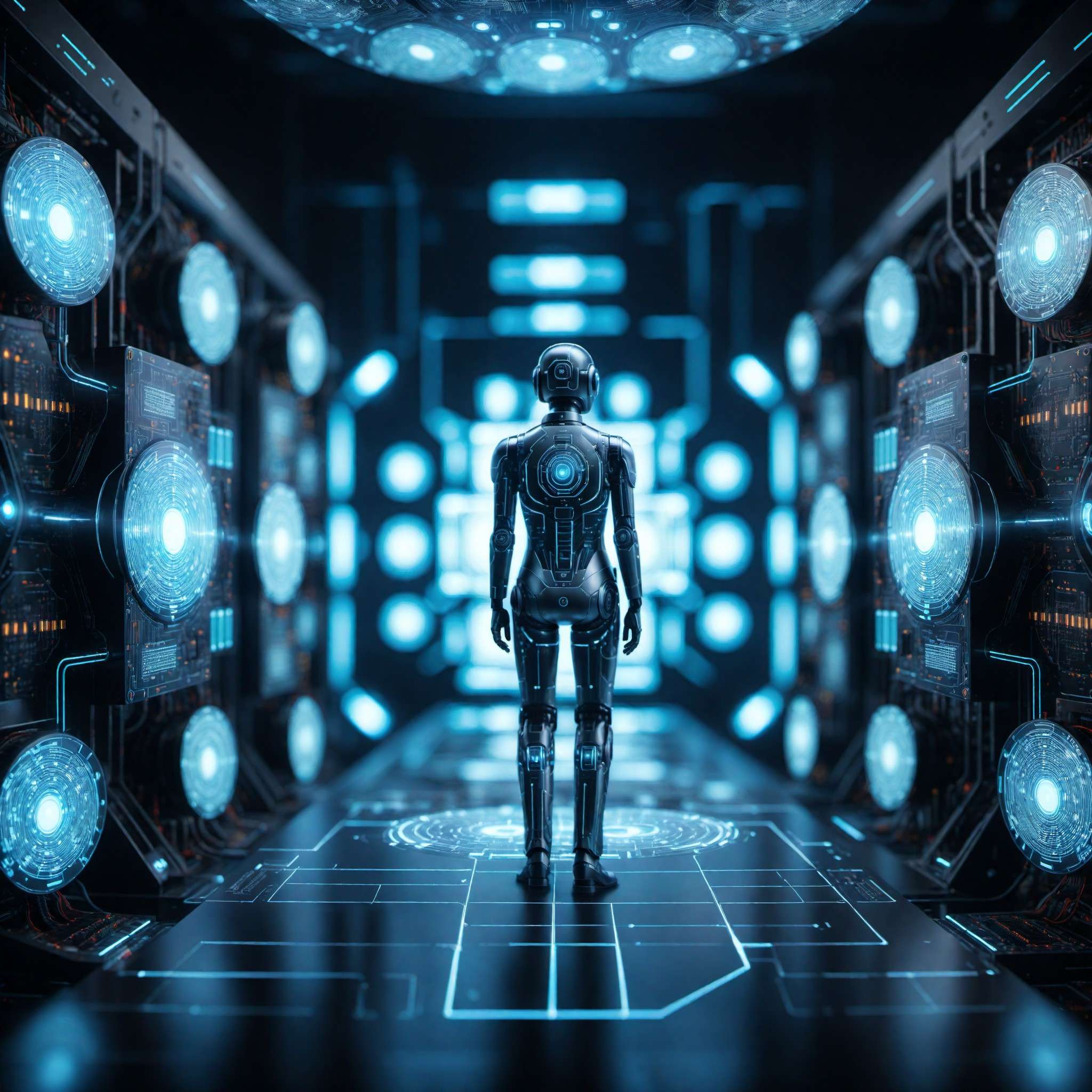
© Copyright , ZombieBunny.Org
Impact of AI on job market
The rise of Artificial Intelligence (AI) is significantly reshaping the job market, bringing both opportunities and challenges. On one hand, AI is automating routine tasks, leading to job displacement in certain sectors. On the other hand, it is creating new jobs and increasing demand for skills related to AI and technology.
AI’s ability to automate tasks, especially those that are repetitive or involve large data processing, is leading to job losses in sectors like manufacturing, customer service, and data entry. However, it’s important to note that while AI is replacing certain jobs, it’s also creating new ones. These include jobs related to AI development and management, like data scientists, AI specialists, and AI ethicists.
Furthermore, AI is increasing the demand for skills related to technology and data analysis. As businesses increasingly adopt AI, professionals with skills in AI, machine learning, data analysis, and programming are in high demand.
Despite the job displacement caused by AI, research suggests that AI could create more jobs than it displaces. A report by the World Economic Forum predicts that by 2025, AI will have displaced 85 million jobs but created 97 million new ones.
The impact of AI on the job market emphasizes the need for a proactive approach in preparing for the future job market. This includes fostering AI literacy, promoting continuous learning, and facilitating skill upgrading and retraining programs to equip the workforce for the AI-driven job market.
How AI is reshaping job roles
The advent of Artificial Intelligence (AI) is not only creating and displacing jobs but also reshaping job roles across various sectors. By automating routine tasks, AI is freeing up professionals to focus on more complex and strategic tasks, thereby shifting the nature of their roles.
In the healthcare sector, AI is taking over tasks like analyzing medical images and patient data, enabling doctors to focus more on patient care and decision-making. In finance, AI is taking over tasks like data analysis and risk assessment, enabling financial professionals to focus more on strategic planning and customer service.
In the education sector, AI is automating administrative tasks and grading, allowing teachers to focus more on teaching and personalizing learning experiences. In customer service, AI chatbots are handling routine queries, allowing customer service representatives to focus on complex issues requiring human intervention.
Moreover, the rise of AI is creating new job roles like AI ethicists, who are responsible for ensuring the ethical use of AI, and AI trainers, who are responsible for training AI systems and interpreting their outputs.
As AI continues to evolve, these shifts in job roles are expected to become more pronounced. This reshaping of job roles underscores the need for professionals to continuously upgrade their skills and adapt to the changing job landscape. It also highlights the need for education and training systems to align with the skills demand in the AI-driven job market.
New skills demand in the AI era
As we transition into the Artificial Intelligence (AI) era, the demand for new skills is surging. While technical skills related to AI and data analysis are in high demand, the importance of soft skills, particularly those that AI struggles to replicate, is also increasing.
On the technical side, skills related to AI programming, machine learning, data analysis, and cybersecurity are highly sought after. Professionals with expertise in these areas are needed to develop, manage, and secure AI systems. Knowledge of programming languages like Python, which is widely used in AI development, is particularly valuable.
However, the rise of AI is also heightening the importance of soft skills. As AI takes over routine tasks, human roles are shifting towards tasks that require creativity, critical thinking, emotional intelligence, and interpersonal skills. Creativity is needed to innovate and solve complex problems, while critical thinking is essential to make strategic decisions. Emotional intelligence and interpersonal skills are crucial for roles that involve human interaction, such as leadership, customer service, and healthcare.
Moreover, the ability to learn and adapt is becoming increasingly important in the AI era. As AI continues to evolve and reshape jobs, professionals need to continuously upgrade their skills and adapt to changes.
The new skills demand in the AI era highlights the need for a shift in education and training systems. To prepare the workforce for the AI era, we need to foster AI literacy, promote continuous learning, and focus on both technical and soft skills.
Section 6: AI and Ethical Considerations
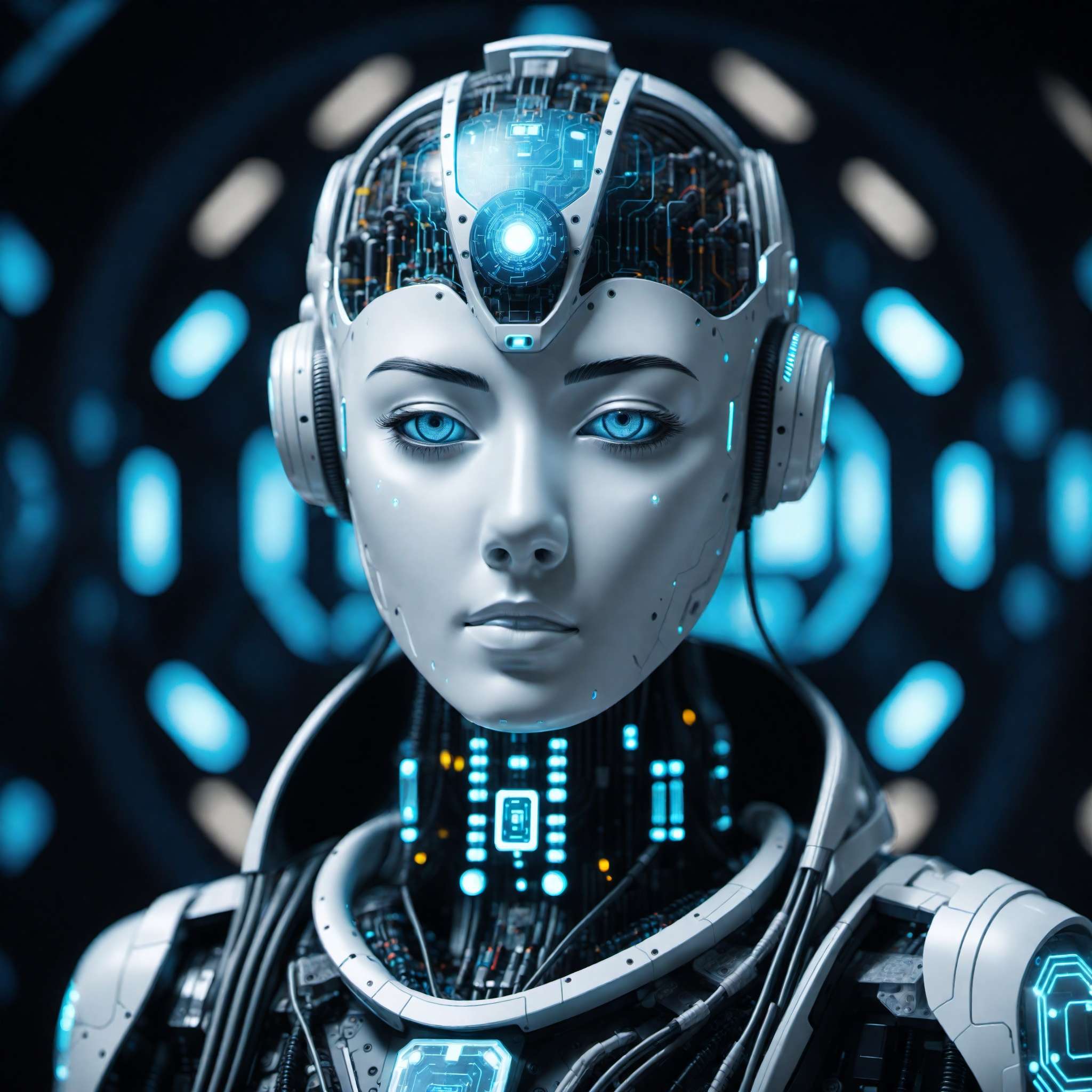
© Copyright , ZombieBunny.Org
Ethical considerations in AI applications
As Artificial Intelligence (AI) continues to permeate various aspects of our lives, ethical considerations surrounding its applications become increasingly crucial. These considerations involve aspects such as fairness, transparency, privacy, and accountability.
Fairness in AI applications is a significant ethical concern. If the data used to train AI systems is biased, the systems can produce biased outcomes, leading to unfair decisions. For instance, an AI system trained on biased hiring data could perpetuate discriminatory hiring practices.
Transparency, or the ability to understand how an AI system makes decisions, is another important ethical consideration. Often referred to as the “black box” problem, the lack of transparency in AI decision-making can lead to trust issues and accountability challenges.
Privacy is a major ethical concern in AI applications. AI systems often require large volumes of data, including personal data, to function effectively. This raises concerns about data privacy and security, particularly in sensitive sectors like healthcare and finance.
Accountability in AI applications refers to determining who is responsible when an AI system makes a wrong decision or causes harm. Given the complexity of AI systems and the involvement of multiple parties in their development and deployment, determining accountability can be challenging.
These ethical considerations highlight the need to develop AI systems that are not only intelligent but also ethical. This includes ensuring that AI systems are trained on fair and representative data, making AI decision-making more transparent, protecting data privacy, and establishing clear accountability mechanisms.
Potential misuse of AI and its consequences
While Artificial Intelligence (AI) offers immense benefits, its potential misuse raises serious concerns and can have far-reaching consequences. Misuse of AI can occur in various forms, from the deployment of AI for malicious purposes to the use of AI to spread misinformation or invade privacy.
One concerning area of potential AI misuse is in cyber attacks. AI can be used to carry out sophisticated cyber attacks, such as creating malware that can evolve and adapt to countermeasures. These AI-powered attacks can be more damaging and harder to detect and prevent than traditional cyber attacks.
AI can also be used to generate deepfakes, which are fabricated images or videos that appear real. These deepfakes can be used to spread misinformation or fake news, with serious consequences for individuals and society.
The misuse of AI in surveillance is another concern. While AI can enhance security, its use in pervasive surveillance can lead to invasion of privacy and violations of civil liberties.
Furthermore, the misuse of AI in decision-making can lead to unfair outcomes. If the data used to train AI systems is biased or the algorithms are not transparent, AI can produce biased or unexplainable decisions.
These potential misuses of AI underscore the need for strict regulations and ethical guidelines governing AI use. It also highlights the need for robust security measures and ethical AI practices to prevent misuse and ensure that AI is used for the benefit of all.
The need for regulation and accountability in AI
The rapid advancement and proliferation of Artificial Intelligence (AI) underscore the pressing need for regulation and accountability. As AI systems become increasingly integral to our lives and industries, establishing clear regulations and accountability mechanisms is crucial to mitigate risks, ensure fair practices, and protect individual rights.
Regulations are needed to set guidelines and standards for AI development and use. They can help ensure that AI systems are developed and used ethically, responsibly, and transparently. Regulations can cover a range of aspects, from data privacy and security to fairness and transparency in AI decision-making.
However, developing regulations for AI is challenging due to its complexity and rapid evolution. The regulations need to be robust enough to cover various scenarios and flexible enough to adapt to technological advances. International cooperation and dialogue are essential to develop globally acceptable regulations and prevent the creation of regulatory silos.
Accountability in AI refers to determining who is responsible when an AI system makes a wrong decision or causes harm. Given the complexity of AI systems and the involvement of multiple parties in their development and deployment, establishing clear accountability mechanisms can be challenging. However, it’s crucial to ensure that individuals or entities can be held accountable for the outcomes of AI systems.
The need for regulation and accountability in AI highlights the importance of a comprehensive approach that involves policymakers, AI developers, users, and society at large. This collaborative approach can help ensure that AI benefits all and does not lead to harm or inequality.
Section 7: AI in Everyday Life
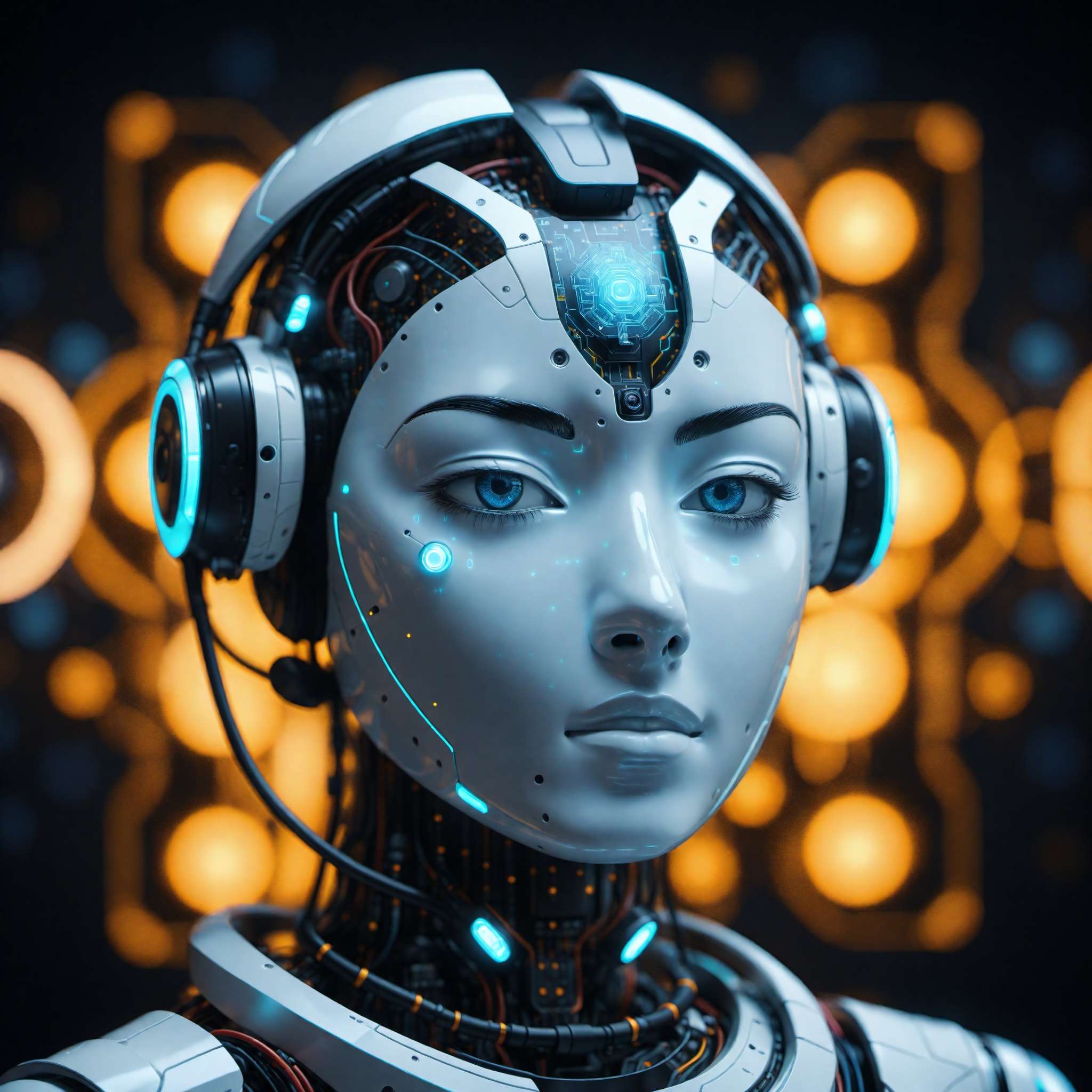
© Copyright , ZombieBunny.Org
The role of AI in our daily life
As Artificial Intelligence (AI) continues to evolve, its impact is increasingly being felt in our daily lives. From smart home devices and personalized recommendations to virtual assistants and autonomous cars, AI is changing the way we live, work, and interact.
One of the most common ways we encounter AI in our daily life is through personalized recommendations. Whether it’s the movie suggestions on Netflix, product recommendations on Amazon, or the news feed on social media, AI algorithms analyze our behavior and preferences to provide personalized content.
Smart home devices like Google Home and Amazon Echo, powered by AI, have become commonplace in many households. These devices use voice recognition AI to understand and respond to our commands, enabling us to control our home appliances, play music, or get information hands-free.
Virtual assistants like Siri and Alexa use AI to help us with various tasks, from setting reminders and sending messages to providing weather updates and answering questions. These AI-powered assistants are becoming increasingly sophisticated, making our lives easier and more efficient.
In transportation, AI is powering self-driving cars, which promise to revolutionize our commute by making it safer and more convenient. Tesla’s Autopilot and Google’s Waymo are examples of AI’s growing role in transportation.
The role of AI in our daily life is set to increase as AI technology continues to advance. While this brings numerous benefits, it also raises important considerations about data privacy, security, and the ethical use of AI.
How AI improves user experience
Artificial Intelligence (AI) plays a pivotal role in enhancing user experience across various platforms and services. By leveraging AI capabilities, businesses can provide personalized, efficient, and intuitive experiences that meet and exceed user expectations.
One of the main ways AI improves user experience is through personalization. AI algorithms analyze user data, including their behavior, preferences, and past interactions, to provide personalized content, recommendations, or services. This personalization makes the user experience more relevant and engaging, thereby increasing user satisfaction and loyalty.
AI also enhances user experience by providing efficient and immediate responses. AI-powered chatbots, for instance, can provide instant customer support, answering queries, resolving issues, or guiding users through processes in real-time. This not only makes the user experience more efficient but also frees up human resources for more complex tasks.
Furthermore, AI can make user interfaces more intuitive through features like voice recognition and image recognition. These features allow users to interact with platforms or devices in natural and convenient ways, enhancing the user experience.
Predictive analytics is another AI capability that enhances user experience. By predicting user needs or behaviors based on their past data, AI can provide proactive services or suggestions, further enhancing the user experience.
As AI continues to evolve, its role in improving user experience is set to grow. This underscores the importance for businesses to invest in AI capabilities to deliver superior user experiences and stay competitive in the digital age.
The benefits and potential threats of AI in personal life
The integration of Artificial Intelligence (AI) in our personal lives brings a range of benefits, making our daily tasks easier, enhancing our experiences, and providing us with valuable insights. However, it also presents potential threats that need careful consideration.
AI offers numerous benefits in our personal lives. From smart home devices that automate household tasks to personalized recommendations that enhance our online experiences, AI makes our lives more convenient and efficient. AI-powered health apps can analyze our health data and provide personalized health insights, while AI in transportation, such as self-driving cars, promises safer and more convenient travel.
Despite these benefits, the incorporation of AI in our personal lives also brings potential threats. One of the major concerns is privacy. AI systems often rely on our personal data to function effectively. This raises concerns about how our data is collected, stored, and used, and who has access to it.
Another threat is the potential for AI to be used for malicious purposes. For example, AI can be used to create deepfakes or carry out sophisticated cyber attacks, which can have serious personal and societal consequences.
Furthermore, the increased reliance on AI in our personal lives could lead to over-dependence, reducing our ability to perform tasks without AI assistance.
While AI offers numerous benefits in our personal lives, it’s crucial to address these potential threats to ensure that the use of AI is secure, ethical, and beneficial for all. This requires clear regulations, robust security measures, and increased public awareness about AI and its implications.
Section 8: AI and Global Challenges
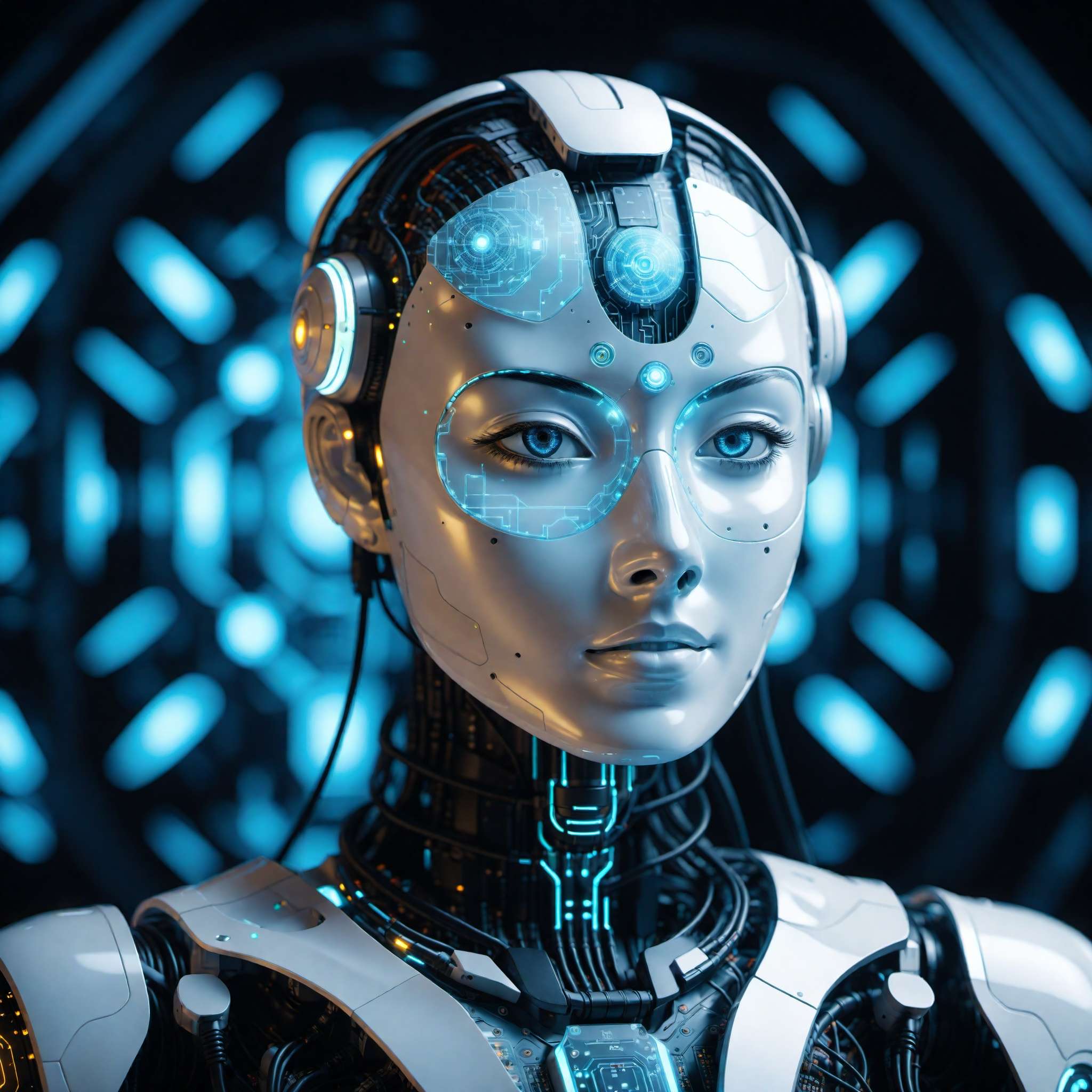
© Copyright , ZombieBunny.Org
How AI is addressing global challenges
Artificial Intelligence (AI) is proving to be a powerful tool in addressing various global challenges, ranging from climate change and healthcare to education and poverty. By leveraging AI capabilities, we can develop innovative solutions, make informed decisions, and enhance our response to these challenges.
In the battle against climate change, AI can analyze vast amounts of environmental data to predict climate patterns, track greenhouse gas emissions, and monitor deforestation. This can inform climate policies and strategies, and enhance our ability to mitigate and adapt to climate change.
In healthcare, AI can help address global health challenges by improving disease diagnosis, personalizing treatment, and enhancing healthcare delivery. For instance, AI can analyze medical images to detect diseases early, predict health risks based on patient data, and automate routine tasks to free up healthcare professionals’ time.
AI is also playing a crucial role in enhancing education, particularly in remote or underserved areas. AI-powered platforms can provide personalized learning experiences, virtual tutoring, and language translation, helping to bridge education gaps and promote inclusive learning.
Moreover, AI can help address poverty by providing valuable insights for policymaking and resource allocation. For instance, AI can analyze satellite imagery and socioeconomic data to identify poverty-stricken areas and inform poverty alleviation strategies.
While AI alone cannot solve these global challenges, it can significantly enhance our ability to understand, tackle, and respond to these challenges. This underscores the immense potential of AI in driving global progress and underscores the importance of investing in AI development and deployment for societal good.
AI’s potential and limitations in global issues
Artificial Intelligence (AI) holds immense potential in addressing global issues, but it also has certain limitations that need to be acknowledged to harness its full potential.
AI’s ability to process vast amounts of data at high speed allows it to provide valuable insights, make predictions, and automate tasks, making it a powerful tool in addressing global issues. Whether it’s predicting climate patterns, diagnosing diseases, personalizing education, or informing poverty alleviation strategies, AI can enhance our ability to understand, tackle, and respond to global challenges.
Despite this potential, AI has certain limitations. One of the main limitations is that AI is only as good as the data it’s trained on. If the data is biased, incomplete, or inaccurate, the AI system can produce misleading or unfair outcomes. This can be particularly problematic when using AI to address complex global issues that require nuanced understanding and decision-making.
Another limitation is the ‘black box’ problem. Many AI systems, particularly those based on deep learning, are not transparent in their decision-making, making it hard to understand how they arrive at their outputs. This lack of transparency can lead to trust issues and accountability challenges.
Moreover, while AI can provide valuable insights and predictions, it cannot replace human judgment and decision-making, particularly when dealing with complex and sensitive issues.
These limitations highlight the need for a balanced approach in using AI to address global issues. It’s crucial to combine AI capabilities with human expertise and judgment, and to ensure that AI systems are developed and used responsibly and ethically.
The impact and future of AI in global context
Artificial Intelligence (AI) is making a significant impact in the global context, revolutionizing various sectors, driving economic growth, and helping address global challenges. As AI continues to evolve, its future impact is set to be even more transformative and far-reaching.
AI is revolutionizing various sectors globally, from healthcare and education to agriculture and energy, enhancing efficiency, innovation, and sustainability. In the global economy, AI is driving growth by creating new markets and opportunities, increasing productivity, and fostering innovation.
AI is also playing a crucial role in addressing global challenges such as climate change, health crises, and poverty. By leveraging AI capabilities, we can develop innovative solutions, make informed decisions, and enhance our response to these challenges.
Looking ahead, the future of AI in the global context is set to be even more transformative. With advancements in AI technologies, we can expect more sophisticated AI applications, from autonomous vehicles and smart cities to advanced healthcare diagnostics and personalized education.
However, the future of AI also brings challenges that need to be addressed. These include ethical and societal issues such as data privacy, job displacement, and the digital divide, as well as technical challenges such as algorithmic bias and the black box problem.
To harness the future potential of AI and address these challenges, we need collaborative efforts involving policymakers, technologists, businesses, and society at large. This includes investing in AI research and development, fostering AI literacy and skills, developing robust regulations and ethical guidelines, and promoting inclusive and sustainable AI practices.
Section 9: The Future of AI
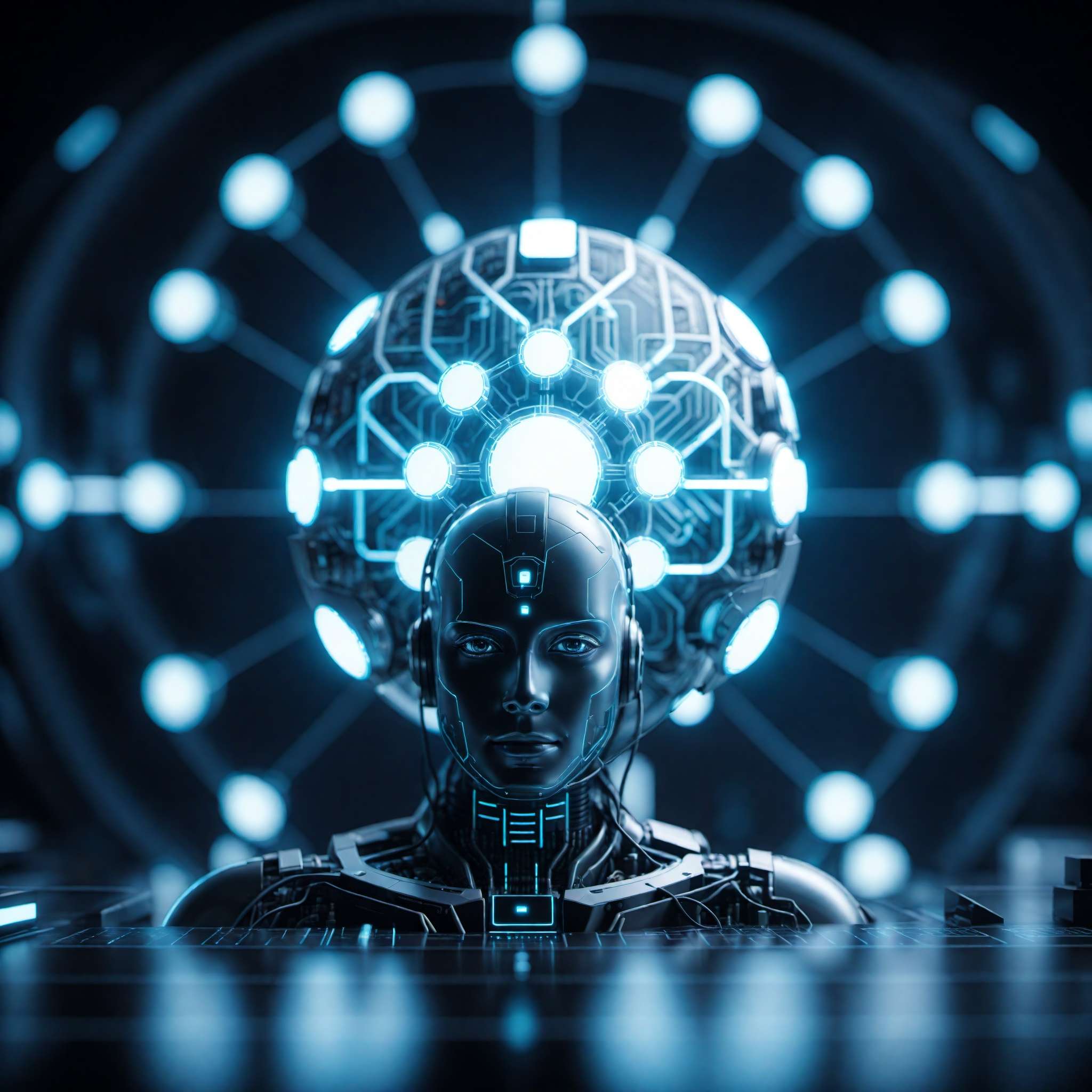
© Copyright , ZombieBunny.Org
Exploring the future trends in AI
As we look towards the future, several trends in Artificial Intelligence (AI) are poised to shape the next frontier of technological innovation and societal transformation.
One significant trend is the rise of explainable AI. As AI systems become increasingly integrated into our lives and decision-making processes, the demand for transparency in how these systems make decisions is growing. Explainable AI aims to make AI decision-making understandable to humans, addressing the ‘black box’ problem and enhancing trust in AI systems.
Another major trend is the convergence of AI with other technologies, such as the Internet of Things (IoT), blockchain, and 5G. This convergence is expected to lead to more sophisticated and integrated AI applications, from smart cities and autonomous vehicles to advanced healthcare systems and secure, decentralized data management.
The democratization of AI is another emerging trend. With the rise of user-friendly AI tools and platforms, AI is becoming more accessible to non-experts, fostering innovation and inclusivity in AI development.
Moreover, ethical and responsible AI is becoming a growing focus. As the impact of AI on society becomes increasingly apparent, the need for ethical guidelines, regulations, and practices in AI development and use is gaining prominence.
These future trends in AI highlight the exciting potential of AI in driving technological innovation and societal transformation. However, they also underscore the importance of proactive measures to address the challenges and implications of these trends, ensuring that the future of AI is beneficial for all.
The opportunities and threats of AI development
The development of Artificial Intelligence (AI) presents both immense opportunities and significant threats that need careful consideration and management.
On the opportunity side, AI is opening up new avenues for innovation, efficiency, and problem-solving. AI has the potential to revolutionize various sectors, from healthcare and education to transportation and energy, enhancing efficiency, sustainability, and personalized experiences. AI also offers significant opportunities in addressing global challenges, such as climate change, health crises, and poverty, by providing innovative solutions and valuable insights.
Moreover, AI is driving economic growth by creating new markets and opportunities, increasing productivity, and fostering innovation. The development of AI also presents opportunities for job creation in areas related to AI development and management, such as data science, AI ethics, and AI training.
On the threat side, the development of AI raises significant ethical, societal, and technical challenges. These include data privacy concerns, job displacement due to automation, algorithmic bias, and the ‘black box’ problem. The potential misuse of AI for malicious purposes, such as cyber attacks and deepfakes, is another major threat.
Furthermore, the rapid development of AI could lead to the creation of AI systems that are beyond human control or understanding, known as the ‘singularity’, posing potential existential risks.
These opportunities and threats underscore the need for a balanced and proactive approach in AI development. This includes investing in AI research and development, fostering AI literacy and skills, developing robust regulations and ethical guidelines, and promoting inclusive and sustainable AI practices.
The vision and potential of AI in future
The vision of Artificial Intelligence (AI) in the future is one of limitless potential, with AI anticipated to drive unprecedented innovation, transformation, and progress in various aspects of our lives and society.
In the future, AI is expected to become increasingly integrated into our daily lives and decision-making processes, from smart homes and personalized experiences to advanced healthcare and autonomous transportation. The future of AI promises more sophisticated and intuitive AI systems that can understand and anticipate our needs, enhancing our lives and experiences.
AI is also envisioned to play a crucial role in addressing global challenges and driving societal progress. By leveraging AI capabilities, we can develop innovative solutions, make informed decisions, and enhance our response to global challenges such as climate change, health crises, and poverty.
Moreover, the future of AI holds the promise of technological breakthroughs and discoveries. With advancements in AI technologies, we can expect to unravel complex mysteries, from the workings of the human brain and the secrets of the universe to the development of advanced materials and renewable energy technologies.
However, this vision of AI in the future is not without challenges. These include ethical, societal, and technical challenges that need to be addressed to harness the full potential of AI. It’s therefore crucial to adopt a balanced and proactive approach, involving policymakers, technologists, businesses, and society at large, to shape the future of AI in a way that is beneficial for all.
Conclusion: Embracing the AI Era
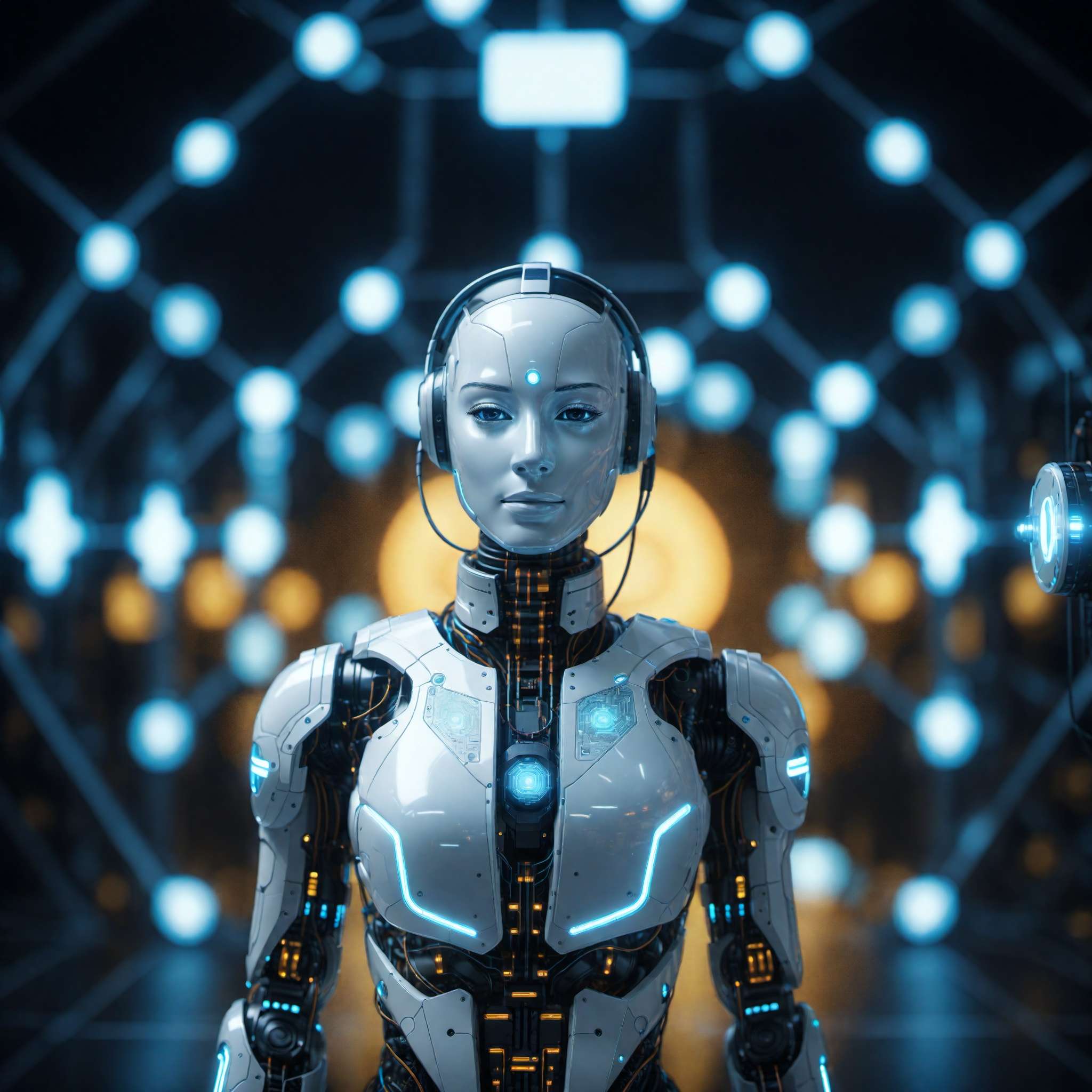
© Copyright , ZombieBunny.Org
The importance of accepting and adapting to AI
As Artificial Intelligence (AI) continues to reshape our world, it’s increasingly important to accept and adapt to this transformative technology. Embracing AI is not just about taking advantage of the numerous benefits it offers, but also about understanding and addressing the challenges it presents.
Accepting AI means acknowledging its potential in driving innovation, efficiency, and progress. From personalized experiences and efficient operations to innovative solutions and valuable insights, AI offers numerous opportunities in various aspects of our lives and society. Accepting AI also means recognizing the role of AI in addressing global challenges and driving societal progress.
However, accepting AI is not without its challenges. These include ethical, societal, and technical challenges, such as data privacy, job displacement, algorithmic bias, and the ‘black box’ problem. Accepting AI therefore requires a balanced view, acknowledging both its potential and its challenges, and taking proactive measures to address these challenges.
Adapting to AI involves adapting our skills, mindsets, and systems to the AI era. This includes fostering AI literacy and skills, promoting continuous learning, and developing flexible and inclusive systems that can adapt to AI-driven changes. Adapting to AI also involves developing robust regulations, ethical guidelines, and accountability mechanisms to ensure that AI is developed and used responsibly and ethically.
Accepting and adapting to AI is crucial in the AI era. By embracing AI, we can harness its potential, address its challenges, and shape a future where AI is used for the benefit of all.
Preparing for the AI era
As we stand on the brink of the AI era, it is vital to prepare ourselves for the profound changes that Artificial Intelligence (AI) will bring. Preparing for the AI era involves building our AI capabilities, fostering AI literacy, developing robust policies and regulations, and promoting ethical and responsible AI practices.
Building our AI capabilities is crucial to harness the potential of AI. This includes investing in AI research and development, fostering innovation in AI applications, and building infrastructure to support AI deployment.
Fostering AI literacy is another vital aspect of preparing for the AI era. As AI becomes increasingly integrated into our lives and decision-making processes, it’s important that we understand how AI works, its potential, and its challenges. This includes fostering AI literacy among the public, policymakers, and businesses, and promoting continuous learning and skills development in AI and related areas.
Developing robust policies and regulations is crucial to guide AI development and use. These policies and regulations need to address various aspects, from data privacy and security to fairness and transparency in AI decision-making, and need to adapt to the rapid evolution of AI.
Promoting ethical and responsible AI practices is another important aspect of preparing for the AI era. This includes establishing clear ethical guidelines for AI development and use, promoting accountability in AI systems, and ensuring that AI is used for the benefit of all.
By preparing for the AI era, we can shape a future where AI drives progress, innovation, and prosperity, while ensuring that its development and use are ethical, responsible, and beneficial for all.
The overall impact and opportunities of AI
Artificial Intelligence (AI) is creating a paradigm shift in our world, bringing transformative changes across various sectors, from healthcare and education to transportation and energy. The overall impact of AI is profound, offering unprecedented opportunities, but also presenting significant challenges that need to be addressed.
The opportunities presented by AI are vast. AI has the potential to drive innovation, enhance efficiency, personalize experiences, and provide valuable insights. From diagnosing diseases and personalizing education to driving autonomous vehicles and predicting climate patterns, AI is transforming how we live, work, and interact.
AI also offers significant opportunities in addressing global challenges. By leveraging AI capabilities, we can develop innovative solutions and make informed decisions to tackle issues like climate change, health crises, and poverty. Moreover, AI is driving economic growth, creating new markets and opportunities, and fostering innovation.
However, the impact of AI is not without its challenges. These include ethical, societal, and technical challenges such as data privacy, job displacement, algorithmic bias, and the ‘black box’ problem. Addressing these challenges is crucial to ensure that the development and use of AI are ethical, responsible, and beneficial for all.
The overall impact and opportunities of AI underscore the transformative potential of this technology. It also highlights the importance of embracing AI, not just by leveraging its benefits, but also by understanding and addressing its challenges, to ensure that AI drives progress, inclusivity, and prosperity for all.
Please support our site and purchase something from our store.



